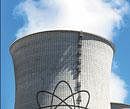The approval comes after nearly four years of exploration in the area.
The uranium mine will have a life of 15 years during which it will supply fuel to nuclear power plants in southern India.
Though the approval by the state government’s High Level Clearance Committee (HLCC) brings the project closer to implementation, it still needs to get clearance from Union Ministry of Environment and Forestry before Uranium Corporation of India Ltd can carry out commercial mining and set up processing mills.
“The total deposit of uranium oxide is 4,250 tonnes. It’s a high grade deposit with 0.1 per cent uranium. This is as good as the deposit in Meghalaya. In comparison the ore in Jadugoda (Jharkhand) is inferior with only 0.05-0.06 per cent uranium,” a senior official in the department of atomic energy who does not wished to be named, told Deccan Herald.
The mine and mills, which would be spread over 40 hectares, had been opposed by local residents and elected representatives who feared it would cause health hazards.
When the issue was raised in the recent State Legislature session, Yeddyurappa assured that the government would take the decision on approving the project only after confirming that the uranium mining would not create any health problems to the local population. During the public hearing conducted by Karnataka State Pollution Control Board on November 16, 2010, residents of Gogi and four nearby villages demanded construction of a water treatment plant and electricity supply, which were agreed by UCIL.
The report of the public hearing was submitted to the MoEF, which subsequently asked for more documentation from the UCIL. “Our application is pending. We are awaiting the MoEF approval,” said a spokesperson from the department of atomic energy from Mumbai.
Centre’s nod
The UCIL had obtained the Centre's permission to conduct exploratory mine in 2007. Initial processing of the ore will be done at a plant to be set up at a village six km from the mining area of Gogi, official sources said.
If it becomes operational within the next few months – which the department of atomic energy is hoping for – it would be a boon for the nuclear sector as mining at Domiasiat in Meghalaya has stalled for years due to stiff opposition from local political parties and activists.
Uranium mining at Cuddapah district of Andhra Pradesh is also in limbo at the moment due to opposition from local people and voluntary organisations. “A second public hearing would have to be held at Cuddapah,” said a DAE official.
Shortage of uranium fuel has been a serious issue for Indian nuclear sector, which is hoping to achieve 20,000 MW capacity by 2020.
Despite imports helping to keep the plants going, steady domestic supply of nuclear fuel is essential for many of them to run in their full capacity.
